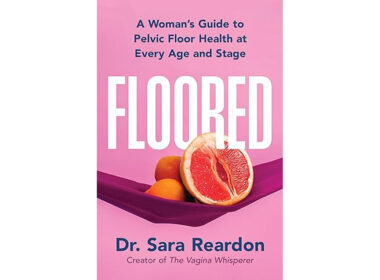Fertility Awareness Methods (FAMs), also known as methods of Natural Family Planning (NFP), are backed by research verifying their effectiveness at preventing pregnancy. Yet there remains much confusion and misinformation when it comes to how doctors and healthcare organizations represent FAM effectiveness. A 2020 article from the Journal of Obstetric and Gynaecology Research reviewed the scientific literature surrounding FAMs, and found that effectiveness rates of the various FAMs greatly exceeds the effectiveness rates reported by mainstream health authorities like the World Health Organization (WHO) and the Center for Disease Control and Prevention (CDC) [1].
The author of the study, Dr. Joseph V. Turner, is a General Practitioner Obstetrician in New South Wales, Australia, with training in reproductive health, skin cancer medicine, and rural/remote and emergency medicine. He is also a senior lecturer at the University of New England, and an honorary senior lecturer at the University of Queensland. The Australian Institute for Restorative Reproductive Medicine indicates that among Dr. Turner’s other work, he treats patients via telehealth informed by fertility awareness, in particular the Billings Ovulation Method®.
In his article in the Journal of Obstetric and Gynaecology Research, Dr. Turner points out that when sources like the CDC or WHO give a single effectiveness rate for FAMs (as they often do), they group every method of fertility awareness together. And, to make matters worse, they often use outdated and/or poorly designed studies to achieve that single, conglomerate figure.
FAM instructors know that grouping together, for example, the Sympto-Thermal Method (which has a 99% method effectiveness rate) with the Rhythm Method (which is not even considered a modern method of fertility awareness, and has an estimated 25% failure rate) is inaccurate and misleading, and experts like Dr. Turner know to go looking for the studies behind the figure. But when average members of the public—and even, unfortunately, many doctors—see a conglomerate figure of “24% failure rate” listed for all FAMs, they are unlikely to delve into the matter further, and assume that each FAM is as unreliable as the next.
The problem with equating evidence-based Fertility Awareness Methods with the Rhythm Method
To illustrate this problematic tendency of grouping FAMs with the Rhythm Method (or even grouping one FAM with a 99% effective rate with another FAM that has a 90% effective rate), Dr. Turner points out:
“…in a similar way that a crude conglomerate pregnancy rate of 9% would not be applied to ‘hormonal contraception’ including the combined oral contraceptive pill (COCP), etonogestrel implant and levonorgestrel intrauterine device (IUD), the latter two of which have individual typical-use pregnancy rates less than 1%, such a generalization about FAM effectiveness is both scientifically and clinically invalid.”
While the CDC used to state a 24% failure rate for all Fertility Awareness Methods on its site, in 2019 the CDC changed its fertility awareness failure rate to “2%-23%”, a figure that more accurately reflects the range of effectiveness found across different methods. A 2% failure rate, meaning a 98% effectiveness rate for some methods of fertility awareness, gives a woman considering nonhormonal methods of family planning a much better idea of whether she can rely on a FAM to prevent pregnancy. Conversely, in lumping the entire range of FAM effectiveness rates together to give a misleadingly low number of 24%, women and couples aren’t given the opportunity to know about all of the proven and effective methods available to them.
With FAM effectiveness, intention makes all the difference
Dr. Turner goes on to point out challenges with comparing FAMs or grouping various FAMs together, given that different FAMs have different rules and methodologies—which, again, is not something the average person (or doctor) might know. He also points out the issues with directly comparing the efficacy of FAMs with contraceptives like the Pill and the IUD, given that user intention is a significant factor in determining FAM effectiveness (this, of course, is not the case for contraceptives, with which the intention in their use as a family planning method is always obvious: the desire to avoid pregnancy).
Dr. Turner also underlines that it is of paramount importance to have higher quality studies on FAMs; in particular, he notes the necessity of diligently tracking and updating each woman or couple’s intention with FAM use, whether that is to avoid pregnancy, achieve pregnancy, or serve another health goal. Tracking a couple’s intentions during the course of any FAM study makes all the difference in determining how effective a method is, both from a perfect use and typical use standpoint.
Dr. Turner concludes that although FAMs “are based on robust physiological and scientific principles” and that “recent systematic reviews have confirmed high perfect-use efficacy rates of FAMs,” higher quality evidence from well-designed studies is needed to add to the “evidence base for FAMs.” He also notes that “clinical resources need to be updated with more correct FAM contraceptive effectiveness rates and relevant explanatory text.”
How Natural Womanhood is working to combat misinformation about FAMs
In 2017, Natural Womanhood teamed up with Fertility Appreciation Collaborative to Teach the Science (FACTS) to gather signatures to petition the CDC to update its effectiveness rates for FAMs. In 2019, we were pleased to see that the CDC had updated its numbers to reflect the more accurate 98% effectiveness rate exhibited by certain FAMs, but there is still work to be done in dispelling misinformation about FAMs.
The CDC’s presentation of this information is not user friendly on its site, and it is still not clear which methods are more effective than others; readers would have to click through the CDC’s sources, and parse through scientific studies to identify which methods are most effective. Further, in its graphic displaying effectiveness rates of different contraceptive methods, it labels FAM as “less effective,” and resulting in “more than 13 pregnancies per 100 women in one year.” Unfortunately, this is still an inaccurate representation of the effectiveness of FAMs, the most effective of which range from 96-99% effective with perfect use, and 86-98% effectiveness with typical use. (For reference, oral contraceptives are 99% effective with perfect use, and 91% effective with typical use.)
The CDC graphic also makes the error of lumping in less effective methods (such as the Standard Days calendar method) with highly effective methods (like the Sympto-Thermal Method), which is not only misleading, but as Dr. Turner pointed out, “both scientifically and clinically invalid.” Natural Womanhood has suggested a visual revision to the CDC’s graphic, to accurately signify that symptom-based methods of fertility awareness are more effective than calendar-based methods.
Despite the work that still needs to be done to more accurately educate medical professionals and the general public about FAMs, it is very encouraging to see others across the globe, like Dr. Turner, working to correct the misinformation about FAM effectiveness. Women deserve accurate information about all their family planning options so they can make informed choices.
When this article refers to fertility awareness methods (FAM), or natural family planning (NFP), we are referring to Fertility Awareness-Based Methods, evidence-based methods of cycle charting which can be used as effective forms of natural birth control when learned by a certified instructor.
References:
[1] Turner J. Misrepresentation of contraceptive effectiveness rates for fertility awareness methods of family planning. Journal of Obstetrics and Gynaecology Research. 2020. doi:10.1111/jog.14593. https://pubmed.ncbi.nlm.nih.gov/33314492/Additional Reading:
CDC Changes Effectiveness Rating on Fertility Awareness Methods
Officially Declaring the Death of the Rhythm Method
This Chart “Perfectly” Displays Perfect vs. Typical Use Effectiveness Rate for Birth Control Methods







